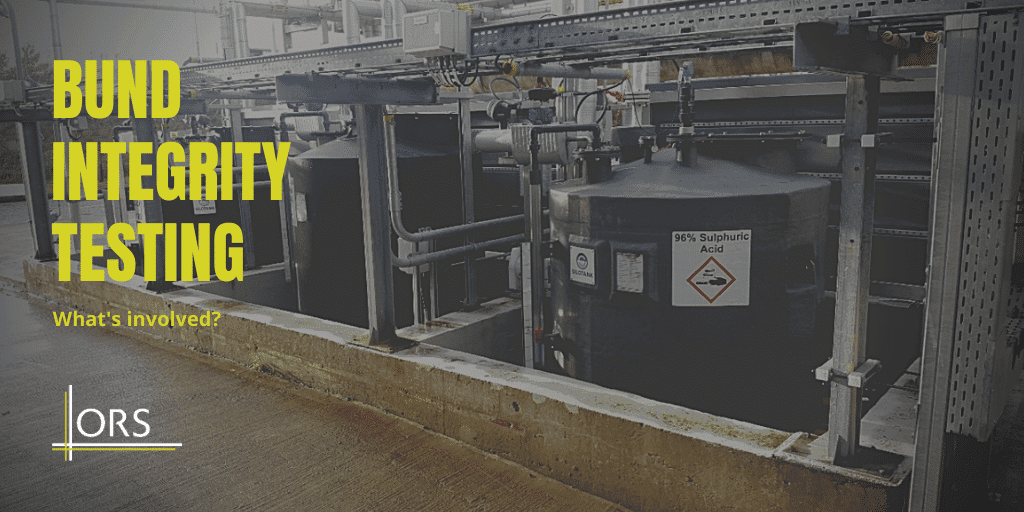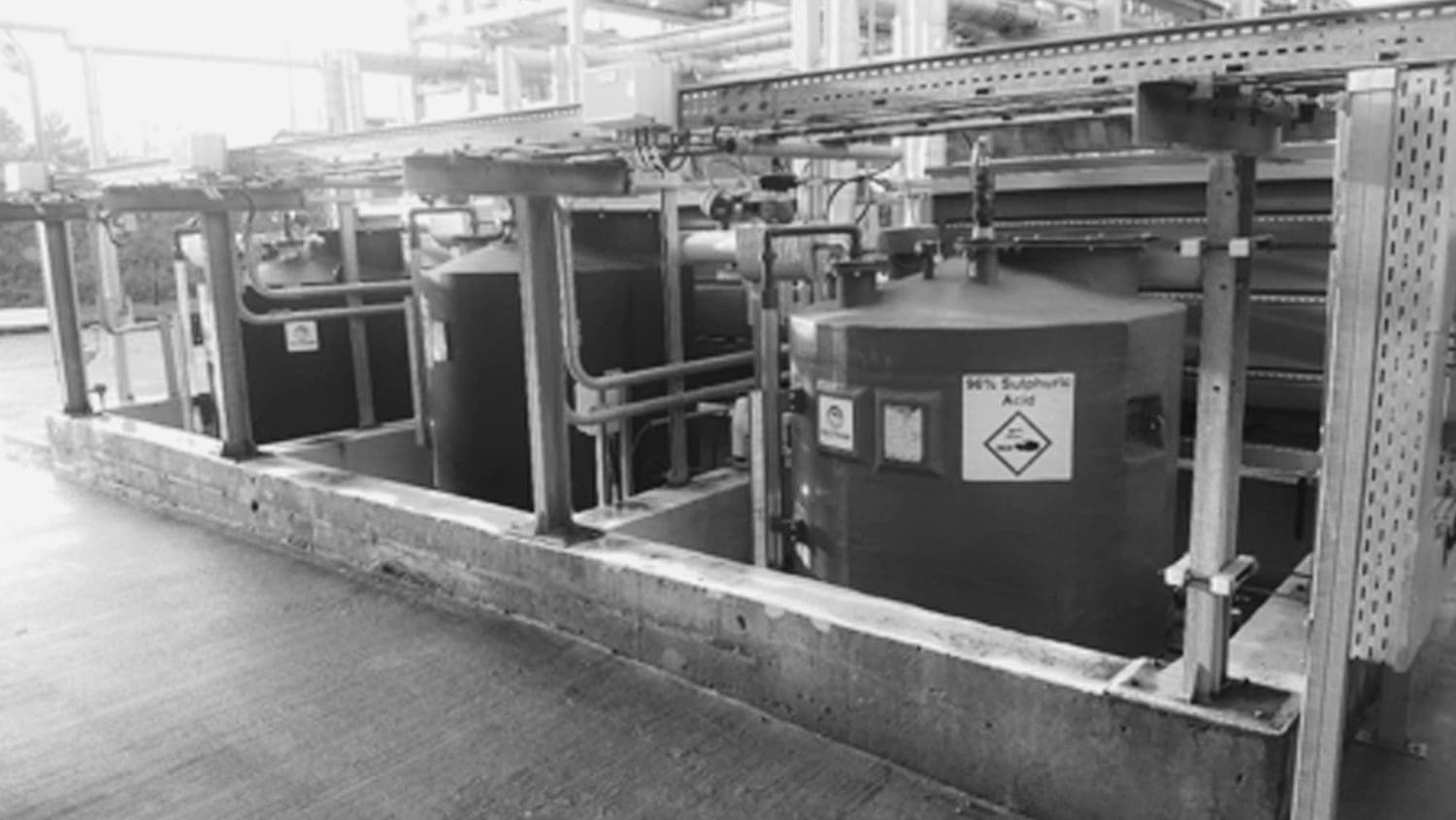ORS | Bund Integrity Testing

ORS have just completed the integrity testing of bunds and underground services at a large multi-national biotechnology facility in Blanchardstown. These works involved the testing of >80 bunds, 8km of underground pipework and firewater retention ponds. The works were carried out in accordance with the site works permit system and Standard Operating Procedures eg: confined space entry, electrical tag out etc.
ORS have supplied an Integrity Report for submission to the EPA which includes:

Figure 1 – Local bunds
- Bund Register
- Line Register
- List of Priority Actions
- Remedial Programme of works
- Integrity Test Certs
- Revisions to site layout plan
What is the purpose of a Bund?
The purpose of a bund is to provide secondary containment should a primary containment vessel fail. Bunds can be local, remote or mobile. The containment vessel is located in or on a local or mobile bund. Remote bunding may consist of low curb/wall around the containment vessel with a pipe or channel leading to a containment tank.
Environmental licensing places an obligation on facilities to have the integrity of the bunds and underground pipes tested every three years. The relevant condition generally reads as follows;
“The integrity and water tightness of all tanks, bunding structures, containers and underground pipes and their resistance to penetration by water or other materials carried or stored therein shall be tested and demonstrated by the licensee prior to the commencement of production activities. This testing shall be carried out by the licensee at least once every three years thereafter and reported to the agency on each occasion….”
The Design Process of Bunds
The Environmental Protection Agency issued The Storage and Transfer of Materials for Scheduled Activities (2004) Guidelines (as amended) which outlines the requirements for design, construction and testing of bunds;
Section 6.3.5 sets out the general design requirements for bunds in which include;
- The bund must be impermeable to the liquid being retained.
- In a tank farm the liquids being stored should not react when mixed in the event of tank failures.
- In general bund walls should not exceed 1.5 m in height so that:
- Fire-fighting operations are not hindered.
- Egress from a bunded area in event of an emergency is relatively easy.
- Natural ventilation of the bunded area is encouraged.
- Where practicable, pumps, valves, couplings, delivery nozzles and other items associated with the operation of a tank are located inside the bund with due regard to appropriate health and safety measures.
- The vent from a storage tank being overfilled should be contained within the bund.
- All pipework leading to or from tanks within a bund should be routed over the top of the bund in order to avoid the need to breach the walls.
- Electrical equipment should therefore ideally be placed above the maximum liquid height or designed for submersion.
- Where two or more tanks are installed within the same bund, the recommended capacity of the bund is the greater of:
- 110% of the capacity of the largest tank within the bund, or
- 25% of the total capacity of all the tanks with in the bund, except where tanks are hydraulically linked in which case they should be treated as if they were a single tank.
Section 6.6 of the Guidelines sets out the requirements for the inspection and testing of bund structures and details a number of recognised engineering standards for the design, construction and testing of concrete bunds;
- BS8007: Code of Practice for the design of concrete structures for retaining aqueous liquids (Class 2 or 3 containment)
- BS8110: Structural use of concrete- code of practice for design and construction (Class 1 containment)
- CIRA Report 163: Construction of bunds for oil storage tanks
How do we test bunds?
Hydrostatic testing is the main method used to test the integrity of bunds. Following visual inspection, by a chartered structural engineer, to ensure it is safe to test, the bund is filled to freeboard level and the water level monitored as per the appropriate engineering standard. Under certain circumstances it may be possible to carry out a partial hydrostatic and visual inspection or just a visual inspection. These include;
- Risk of tank flotation
- Low level electrical equipment
- Excessive quantity of water needed to fill the bund/fire water retention pond
- Significant impact to production/operations on site
Following completion of the integrity testing ORS will provide an Integrity Report and a remedial programme of works. Our report is suitable for submission to the relevant regulatory authority to meet the requirement of the licence/permit condition detailed above.
Contact our Environmental Specialist Alan Kiernan Today!
Contact Alan Kiernan at ORS for more information on our Bund Integrity Testing
